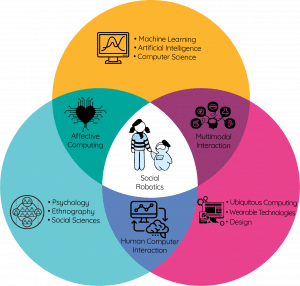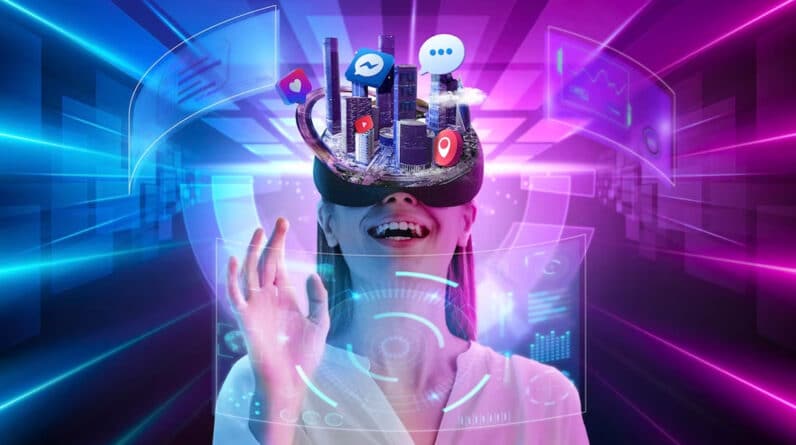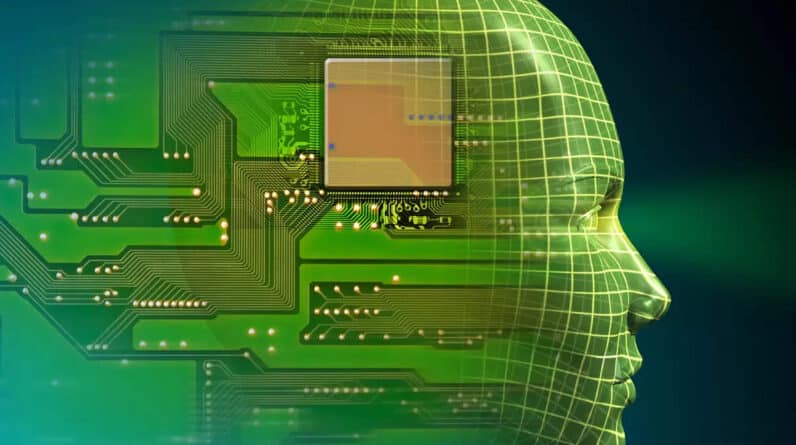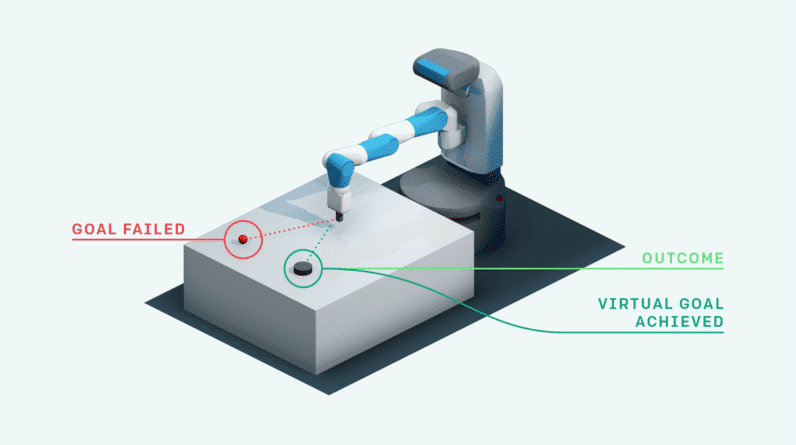In this article, you will explore the exciting world of AI and robotics and the incredible advancements being made in humanoid and autonomous machines. Discover how these cutting-edge technologies are revolutionizing industries, from healthcare to manufacturing, and unlocking new possibilities for the future. From lifelike humanoids to self-driving cars, prepare to be amazed by the endless possibilities of AI and robotics.

1. Overview of AI and Robotics
Artificial Intelligence (AI) and Robotics are two rapidly evolving fields that have made significant advancements in recent years. AI refers to the ability of machines to simulate human intelligence, while Robotics focuses on the design, creation, and operation of robots. These two fields are closely intertwined, as AI plays a crucial role in enhancing the capabilities of robots and making them more intelligent and autonomous.
1.1 Definition and Concepts of AI
Artificial Intelligence can be defined as the simulation of human intelligence processes by machines. It involves tasks such as problem-solving, speech recognition, learning, and decision-making. AI can be divided into two categories: Narrow AI and General AI. Narrow AI refers to systems that are designed to perform specific tasks, such as voice assistants or self-driving cars. On the other hand, General AI refers to systems that possess human-level intelligence and can perform any intellectual task that a human being can do.
1.2 Definition and Concepts of Robotics
Robotics is the branch of technology that deals with the design, construction, operation, and application of robots. A robot is an autonomous or semi-autonomous machine that can interact with its environment and perform tasks typically done by humans. Robotics combines various disciplines such as mechanical engineering, electrical engineering, computer science, and artificial intelligence to create intelligent machines capable of carrying out complex tasks.
1.3 Relationship Between AI and Robotics
AI and Robotics have a symbiotic relationship, where AI enhances the capabilities of robots, and robots serve as a platform for AI advancements. AI provides robots with the ability to perceive and understand their environment, make decisions, and perform tasks autonomously. On the other hand, robots provide AI with a physical presence, enabling it to interact with the world. This synergy between AI and Robotics has led to the development of advanced humanoid and autonomous machines.
1.4 Importance and Applications of AI and Robotics
The advancements in AI and Robotics have significant implications in various industries and sectors. In healthcare, humanoid robots are being used to assist in surgeries and provide companionship to the elderly. In manufacturing, robots are automating repetitive tasks, increasing productivity and efficiency. Autonomous vehicles are revolutionizing transportation, making it safer and more convenient. AI and Robotics also have applications in space exploration, disaster response, and agriculture, to name a few. These technologies have the potential to transform industries and improve our quality of life.
2. Evolution of Humanoid Robots
Humanoid robots are machines designed to mimic the human form and possess human-like capabilities. The development of humanoid robots can be traced back to early concepts and prototypes.
2.1 Early Concepts and Prototypes of Humanoid Robots
The idea of humanoid robots dates back to ancient times, with stories of mechanical beings found in myths and legends. However, the first concepts of humanoid robots as we know them today emerged in the 20th century. In 1928, Westinghouse Electric Corporation presented Elektro, a humanoid robot that could walk and speak. This early prototype paved the way for further advancements in humanoid robotics.
2.2 Milestones in Humanoid Robot Development
Over the years, significant milestones have been achieved in the development of humanoid robots. In 1970, WABOT-1, developed by Waseda University in Japan, became the first full-scale humanoid robot capable of walking and manipulating objects. In the 1990s, Honda unveiled P2, the precursor to their famous humanoid robot, ASIMO. ASIMO demonstrated advanced capabilities such as running, climbing stairs, and recognizing faces. These milestones marked significant progress in creating humanoid robots that could perform complex tasks.
2.3 Contemporary Humanoid Robot Examples
Today, several advanced humanoid robots exist, showcasing remarkable capabilities. Boston Dynamics’ Atlas is a highly agile humanoid robot that can perform acrobatic maneuvers and navigate uneven terrain. Sophia, developed by Hanson Robotics, is known for its realistic facial expressions and social interactions. Pepper, created by SoftBank Robotics, is a humanoid robot designed for human-robot interactions in various settings. These contemporary examples highlight the rapid advancements in humanoid robot technology.

3. Advancements in Humanoid Robots
Advancements in AI and Robotics have greatly contributed to the development of humanoid robots. These advancements have focused on improving various aspects of humanoid robots, including artificial intelligence integration, sensory and perception improvements, enhanced motor skills and movements, and even emotional intelligence.
3.1 Artificial Intelligence Integration in Humanoid Robots
Artificial intelligence plays a crucial role in making humanoid robots more intelligent and autonomous. AI algorithms are used to enable robots to perceive and understand their environment, recognize objects and faces, and make decisions based on the information gathered. Integration of machine learning and deep learning techniques allows humanoid robots to continuously improve their abilities and adapt to new situations.
3.2 Sensory and Perception Improvements in Humanoid Robots
To interact effectively with their surroundings, humanoid robots require advanced sensory systems. Recent advancements in sensor technologies have improved the perception capabilities of humanoid robots. Cameras, depth sensors, and other sensing devices enable robots to see and understand their environment. Infrared and touch sensors provide tactile feedback, allowing robots to interact with objects and humans in a realistic manner.
3.3 Enhanced Motor Skills and Movements
One of the key challenges in humanoid robotics is replicating human-like motor skills and movements. Researchers have made significant progress in developing robotic systems that mimic human motion. Advanced actuators, such as electric motors and pneumatic muscles, enable humanoid robots to move fluidly and perform complex tasks. The integration of AI algorithms also contributes to the improvement of motor skills, as robots can learn and optimize their movements based on feedback.
3.4 Emotional Intelligence in Humanoid Robots
Emotional intelligence, the ability to recognize and express emotions, is an important aspect of human-human interactions. Researchers are working on integrating emotional intelligence into humanoid robots, allowing them to understand human emotions and respond accordingly. This involves developing systems that can recognize facial expressions, interpret vocal cues, and generate appropriate emotional responses. Emotional intelligence in humanoid robots has the potential to enhance their social interactions and make them more relatable to humans.
4. Autonomy in Robotics
Autonomous robots are machines capable of performing tasks without human intervention. They can sense, perceive, and make decisions based on their environment, allowing them to operate independently in complex and dynamic situations.
4.1 Definition and Types of Autonomous Robots
Autonomous robots can be defined as machines that have the ability to operate without direct human control. They are designed to perform specific tasks or operate in specific environments autonomously. There are different types of autonomous robots, ranging from simple ones with pre-programmed behaviors to more advanced ones that can learn and adapt to changing conditions. Some examples of autonomous robots include self-driving cars, autonomous drones, and industrial robots.
4.2 Sensor Technologies for Autonomous Machines
Sensors play a crucial role in enabling autonomy in robots. Autonomous machines rely on various sensor technologies to perceive their environment and gather information. These sensors can include cameras, lidar, radar, and ultrasonic sensors, among others. By continuously monitoring their surroundings, autonomous robots can make informed decisions and navigate safely in complex environments.
4.3 Navigation and Mapping Systems
Navigation and mapping are essential for autonomous robots to operate effectively. Navigation systems use sensor data to determine the robot’s position in its environment and plan optimal paths to reach its goals. Mapping systems allow robots to create a representation of their surroundings and update it in real-time as they move. Simultaneous Localization and Mapping (SLAM) techniques enable robots to accurately navigate and explore unknown environments.
4.4 Challenges and Future Developments
Although great strides have been made in autonomous robotics, there are still challenges to overcome. One major challenge is ensuring the safety and reliability of autonomous systems, particularly in critical applications such as self-driving cars or medical robots. Another challenge is the development of robust algorithms that can handle complex and dynamic environments. Future developments in autonomous robotics will focus on improving sensor technologies, enhancing decision-making algorithms, and addressing regulatory and ethical considerations.

5. Artificial Intelligence in Autonomous Machines
Artificial Intelligence plays a crucial role in enabling autonomy in machines. AI algorithms allow autonomous machines to learn and adapt to their environment, make decisions based on data, and continuously improve their performance.
5.1 Machine Learning and Deep Learning Algorithms
Machine Learning and Deep Learning algorithms are at the core of AI in autonomous machines. These algorithms enable machines to learn from large datasets and extract meaningful patterns. Reinforcement Learning, a subset of Machine Learning, is particularly useful for training autonomous machines to make decisions in dynamic environments. Deep Learning, on the other hand, involves training neural networks with multiple layers to perform complex tasks such as object recognition or natural language processing.
5.2 Perception and Decision-Making Systems
Perception and decision-making are critical components of AI in autonomous machines. Perception systems allow machines to understand their environment through sensing technologies, such as cameras or lidar. AI algorithms process the sensory data and extract relevant information, such as the presence of obstacles or the location of objects. Decision-making systems use this information to plan and execute appropriate actions, ensuring safe and efficient operation of the autonomous machine.
5.3 Integration of AI with Autonomous Machines
The integration of AI with autonomous machines involves combining perception, decision-making, and control systems into a cohesive framework. AI algorithms enable machines to perceive and understand their environment, make decisions based on the data, and control their actions accordingly. This integration allows autonomous machines to adapt to changing conditions, learn from experience, and optimize their performance over time.
5.4 Benefits and Limitations of AI in Autonomy
The application of AI in autonomous machines brings several benefits. AI enables machines to operate autonomously, reducing the need for human intervention and increasing efficiency. It also allows machines to adapt to new situations and learn from experience, improving their performance over time. However, there are also limitations to AI in autonomy. Machines may encounter situations that they were not trained for, resulting in suboptimal or unsafe behavior. Additionally, ethical considerations arise when autonomous machines are tasked with making decisions in complex moral situations.
6. Human-Robot Interaction
Human-Robot Interaction focuses on enabling effective communication and collaboration between humans and robots. This field encompasses various aspects, including natural language processing, social and emotional interactions, ethical considerations, and user experience design.
6.1 Natural Language Processing and Communication
Natural Language Processing (NLP) is an area of AI that focuses on enabling computers to understand and communicate in human language. NLP techniques are crucial for facilitating communication between humans and robots. Through NLP, robots can understand spoken or written commands, answer questions, or engage in conversations with humans. NLP also enables robots to generate natural language responses, making human-robot interactions more intuitive and seamless.
6.2 Social and Emotional Interactions
Emulating social and emotional interactions is an important aspect of human-robot interaction. Researchers are exploring ways to enable robots to recognize and express emotions, understand social cues, and engage in socially appropriate behaviors. This involves developing algorithms and models that can recognize facial expressions, interpret gestures, and generate appropriate emotional responses. Socially intelligent robots have the potential to enhance human-robot relationships and make interactions more natural and enjoyable.
6.3 Ethical Considerations in Human-Robot Interaction
As humans and robots increasingly interact, ethical considerations become crucial. Human-robot interaction raises questions about privacy, consent, trust, and accountability. It is essential to establish ethical frameworks and guidelines to ensure that robots are used in ways that respect human values and do not cause harm. Ethical considerations also extend to the behavior and decision-making capabilities of autonomous machines, where the concept of responsible AI plays a significant role.
6.4 User Experience and Design Principles
Designing robots that provide a positive user experience is of utmost importance. User experience design principles aim to create robots that are intuitive, engaging, and easy to interact with. This involves considering factors such as ergonomics, usability, and aesthetics. User-centered design approaches ensure that robots are designed with the needs and preferences of users in mind, leading to more enjoyable and meaningful human-robot interactions.

7. Applications of Humanoid and Autonomous Machines
Humanoid and autonomous machines find applications in various industries and sectors. Their capabilities enable them to perform tasks that are hazardous, repetitive, or require high precision. The following are some notable applications of humanoid and autonomous machines.
7.1 Healthcare and Medical Robotics
In healthcare, humanoid and autonomous machines are making significant contributions. Humanoid robots are used to assist in surgeries, providing precise movements and reducing the risk of human error. Autonomous robots are employed in hospitals for tasks such as delivery of medications and supplies, disinfection, and monitoring patient vital signs. These machines are improving healthcare efficiency, reducing the workload on medical staff, and enhancing patient care.
7.2 Manufacturing and Industrial Automation
Humanoid and autonomous machines have revolutionized manufacturing and industrial automation. Robots are being used extensively in factories for tasks such as assembly, welding, and quality control. Autonomous robots equipped with computer vision systems can navigate factory floors, pick and place objects, and collaborate with human workers. These technologies have increased productivity, improved product quality, and made manufacturing processes more flexible and efficient.
7.3 Assistive and Service Robotics
Assistive and service robotics focus on providing assistance and support to individuals in various capacities. Humanoid robots are being developed to assist people with disabilities or elderly individuals with daily tasks such as household chores or personal care. Autonomous robots are used in service industries, such as hotels or airports, to provide information, deliver goods, or clean spaces. These applications enhance independence, improve accessibility, and enhance the overall quality of life for individuals.
7.4 Space Exploration and Extraterrestrial Robotics
Humanoid and autonomous machines play a crucial role in space exploration and extraterrestrial robotics. Autonomous rovers have been used to explore the surfaces of planets, such as Mars, gathering valuable data and images. Humanoid robots are being developed to assist astronauts in space missions, where they can perform tasks in a weightless environment. As we venture further into space, humanoid and autonomous machines will continue to be at the forefront of exploration and scientific discovery.
8. Impact of AI and Robotics on Society and Workforce
The rapid advancements in AI and Robotics have significant implications for society and the workforce at large. While these technologies bring numerous benefits, they also raise concerns and challenges that need to be addressed.
8.1 Economic and Job Market Implications
AI and Robotics are transforming industries and reshaping the job market. Automation of tasks previously performed by humans has the potential to reduce the demand for certain jobs. However, it also creates new job opportunities, particularly in the field of AI and robotics. The dynamics of the labor market will continue to change, with a shift towards jobs that require skills in collaboration with AI and robots. Governments and organizations need to adapt to these changes and ensure that workers are equipped with the necessary skills to thrive in the digital era.
8.2 Ethical Dilemmas and Social Challenges
The widespread adoption of AI and Robotics raises ethical dilemmas and social challenges. As machines become increasingly intelligent and capable, questions arise about responsibility, accountability, and the impact on human autonomy and decision-making. The use of AI in areas such as surveillance or autonomous weapons raises concerns about privacy, safety, and potential misuse. It is important to establish ethical frameworks, regulations, and guidelines to ensure the responsible development and deployment of AI and robotics technologies.
8.3 Education and Skill Requirements for the Future
The advancements in AI and Robotics necessitate a shift in education and skill requirements. As jobs become more technology-driven, there is a growing demand for skills related to AI, robotics, and data analysis. It is crucial to equip individuals with the necessary knowledge and skills to work collaboratively with AI and robots. Education systems need to emphasize critical thinking, problem-solving, creativity, and digital literacy to ensure individuals are prepared for the future workforce.
8.4 Collaborative Workforce with AI and Robots
AI and Robotics have the potential to augment human capabilities and enable a collaborative workforce. Humans and machines can work together, with each contributing their unique strengths. Collaborative robots, also known as cobots, are designed to work alongside humans, assisting with tasks that require precision or strength. In dynamic environments, humans and robots can collaborate to solve complex problems, leveraging the strengths of both parties. The development of collaborative work environments that promote human-robot collaboration will be key in harnessing the full potential of AI and Robotics.

9. Current Limitations and Future Possibilities
While AI and Robotics have made remarkable progress, there are still limitations and challenges that need to be addressed. However, the future holds exciting possibilities for these fields.
9.1 Technical and Engineering Constraints
Technological and engineering constraints continue to pose challenges in the development of humanoid and autonomous machines. Power limitations, size, and weight constraints affect the mobility and operation of robots. Ensuring robustness, durability, and safety in complex environments remains a priority. Overcoming these technical constraints requires continuous innovation and collaboration across disciplines.
9.2 Technological Advancements on the Horizon
The future holds promising technological advancements for AI and Robotics. Further advancements in sensor technologies, particularly in areas such as computer vision and touch sensing, will enhance robot perception and interaction capabilities. Continued developments in AI algorithms, particularly in areas such as reinforcement learning and explainable AI, will lead to more intelligent and trustworthy autonomous machines. Integration of AI and robotics with emerging technologies, such as augmented reality or quantum computing, will unlock new possibilities and applications.
9.3 Artificial General Intelligence and Superintelligence
Artificial General Intelligence (AGI), the ability of machines to perform any intellectual task that a human can do, is a concept that has garnered significant attention. While the development of AGI remains a topic of debate, it represents a future possibility that could revolutionize AI and Robotics. AGI has the potential to surpass human intelligence and bring about unprecedented advancements, but also raises concerns about control, safety, and the societal consequences of superintelligent machines.
9.4 Ethical and Regulatory Frameworks for AI and Robotics
The continued development and deployment of AI and Robotics necessitate the establishment of ethical and regulatory frameworks. Ethical considerations, such as fairness, transparency, and accountability, need to be at the forefront of AI and robotics development. Governments, organizations, and stakeholders must work together to ensure that AI and Robotics are used in ways that benefit humanity and mitigate potential risks. Establishing guidelines and regulations will provide a framework for responsible and beneficial use of AI and Robotics.
10. Conclusion
AI and Robotics have experienced significant advancements, leading to the development of humanoid and autonomous machines that can perform complex tasks and interact with humans in meaningful ways. The integration of AI algorithms has enhanced the intelligence and autonomy of robots, while advancements in sensor technologies have improved perception capabilities. Humanoid robots continue to evolve, showcasing remarkable motor skills and even emotional intelligence. Autonomous machines, on the other hand, are capable of operating independently, making decisions, and navigating complex environments. These advancements have resulted in applications in healthcare, manufacturing, space exploration, and other industries, revolutionizing the way we live and work.
AI and Robotics also bring about challenges and considerations that must be addressed. The impact on society and the workforce requires adaptation and a focus on developing the skills necessary for collaboration with AI and robots. Ethical frameworks are needed to ensure responsible development and deployment of AI and robotics technologies. Despite current limitations, the future holds exciting possibilities for AI and Robotics, ranging from technological advancements to the potential for Artificial General Intelligence. By harnessing the potential of AI and Robotics in a responsible and ethical manner, we have the opportunity to create a future where humans and machines collaborate to solve complex problems and enhance our quality of life.






